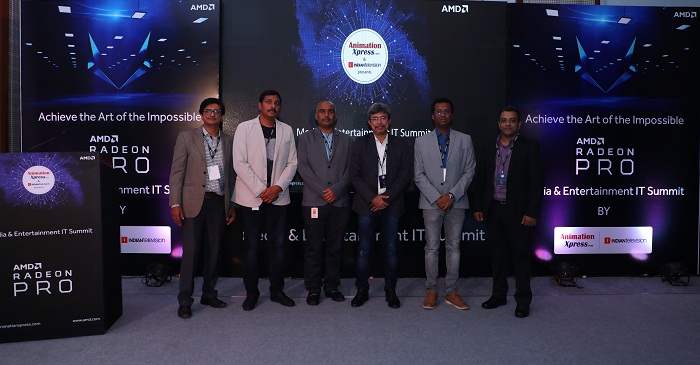In a first of sorts, AMD got together with AnimationXpress and Indiantelevision.com to bring to the Indian M&E industry ‘The Media & Entertainment IT Summit’. The summit sought to get insights into the state of information technology and tech in the Indian animation, VFX, gaming, broadcast and production spaces and the challenges that chief technology officers face with the rapid technological leapfrogs.
The Garden Banquet of Taj Krishna in Hyderabad was brimming with enthusiasm, anticipation and a packed batch of esteemed panelists and delegates on 21 December. Post the registration process, the attendees set in for a set of comprehensive sessions.
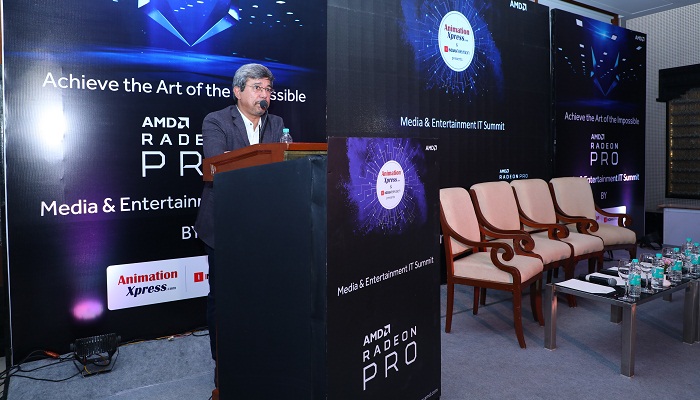
Addressing the gathering, AnimationXpress and Indiantelevision Dot Com Group CEO, Anil Wanvari shared his views on how technology has become an integral part of the M&E ecosystem, right from content creation pipelines to broadcast and more. Further delving into the topic, he explained how CTOs and IT professionals in the M&E industry have been somewhat been underrepresented and this summit was a precise attempt to bridge the gap.
The first panel of the day consisted of Doordarshan Kendra Hyderabad DDG(E) and head of office D. Ranganadham, TV9 Technical head Badari Prasad and Project Manager Technology Whacked Out Media Md. Danish with Anil Wanvari moderating the panel.
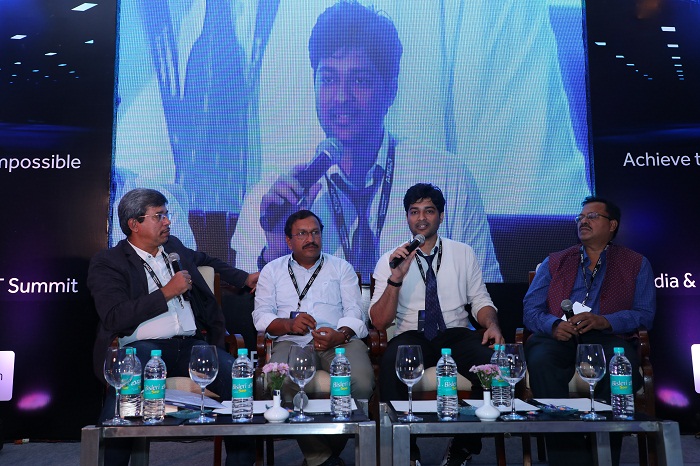
Starting off the panel Ranganadham explained about the workflow pipelines at Doordarshan which is the national public broadcaster with a terrestrial network, and how the Telangana DD Yadagiri turned to tapeless, the entire chain from ingesting to playout. And regularly send news feeds to other doordarshan kendras particularly to DD News. He admitted that over time terrestrial transmitters were being shut down and that the focus is being shifted to improving the infrastructure with state of the art technology in regional kendras and satellite transmission.
Ranganadham elaborated that upgradation has been slow in Hyderabad Kendra because of the stagnant revenues coupled with reduction in budgetary support from the government which led to technological gaps continuing to exist despite the entire station is mostly automated. He is hopeful that these will get filled in the coming year as the DD and Prasarbharati chiefs are energetic and have dynamic ideas.
DD Yadagiri developed software using Kasper CG and VB.Net in playout, news room automation instead of professional software. He also mentioned that in the coming year or so a lot of investment is likely to be put into technology with HD too being given a push.
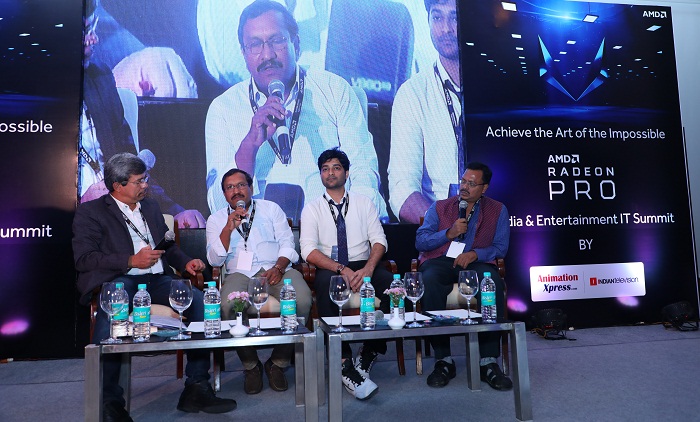
Danish explained how Whacked Out Media, part of the Mango Group, is Asia’s biggest MCN and has a handle on the following sectors – Digital Media, Music, Short Films, Animation & VFX, Live Events and Advertisements. It owns more than 1400 channels on YouTube, with a total of eight hundred thousand videos as of now and has the digital rights of 5000+ movies, which it has to syndicate to various outlets, apart from distributing to online platforms.
To handle that scale of content (2 PB,) it cannot rely on pure cloud-based solutions, which can cost more than Rs. 8 lakhs per month. Instead, the company has a combination of cloud NAS (network attached storage) and linear tape open storage (LTOs) options. “Our movies catalog is secured on the LTOs to ensure that it is secure,” he revealed.
Mergers and acquisition of new content is something for which the company strives, apart from primarily focusing on producing original content. Besides this, the Company also has a farm of more than 200 branded workstations from Dell and HP.
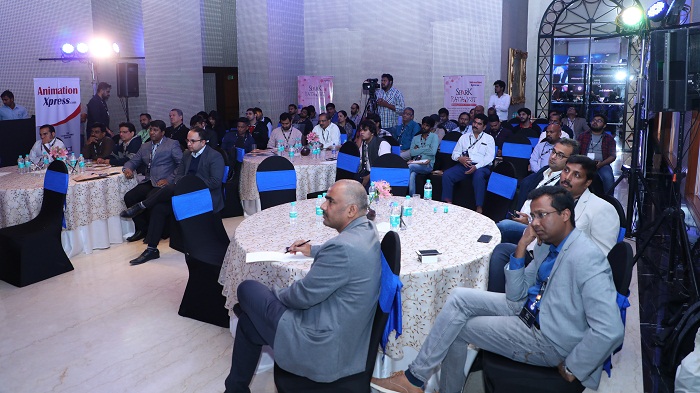
TV9 is purely a SD service for five of its language channels (Telugu, English, Kannada, Gujarati and Marathi) and a lot of internal innovation was resorted to by the broadcaster’s management. “The main challenge is that we get content coming to us from various devices – phones, video and DSLR cameras – and getting that in the broadcastable format is a task,” disclosed Badiri Prasad TV9 director. With stable running technology for its 14 year old news network, he is looking forward to the launch of a HD service which is going to draw up new technological mores.
The broadcast and digital players highlighted that the major challenges they face, which include:
* There is a constant demand for better computer processing speed from users within their ecosystem. How to future proof the company against technological enhancements is what keeps them busy.
- Getting up to scratch in terms of both hardware and software within reasonable investment is also what is a must.
- Rendering speed requirements are going up around every six months, the configuration and pipelines must improve as well.
- Graphic requirements are going up; hence the need for better processors in better machines is becoming a necessity.

The second panel focused on the technical aspects of the AVGC industry in a rather comprehensive session consisting of Centroid India director Parth Shah, Prasad Group head of corporate communications Mohan Krishnan, Green Gold Animation head of operations Suresh Laddunuri , Baytree Digital CEO Upen N Desai, Digital Domain VFX producer Praveen Kilaru, Rotomaker technical head Saji Nair and Digital Domain senior pipeline supervisor Ashish Dantu.
Said Shah, “Wherever we shoot, be it UK or India we record it on the capture machine and on the same day we share the data with Serbia team. Our hardware requires mostly cameras and workstation, though not very high end workstations but nowadays since we are providing real-time motion capture in Unreal Engine along with Virtual Camera, VR and all; so these require high-end workstations as that requires lot of computing power.”
Krishnan pointed out that Prasad offers services such as digitisation, post production, film restoration, and asset management and it has to be totally up to date in terms of tech and information tech in all its facilities as it deals with international clients. With service facilities in Burbank, UK, Germany, Japan and in three cities in India, it has been receiving more and more request for 4K and 8K conversions from clients. The company has its tech infrastructure planning in place and budgets have been going up.
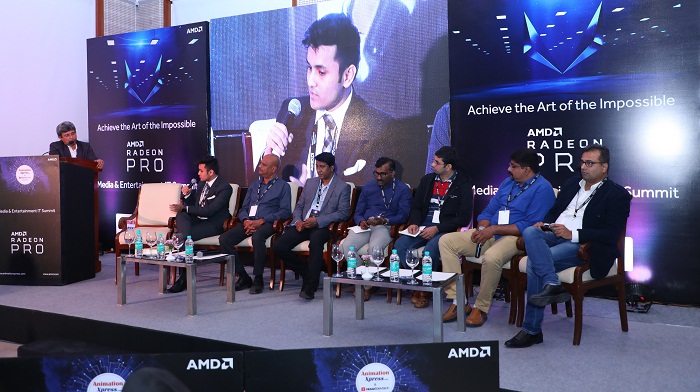
Suresh explained that Green Gold has had to up its IT and tech infrastructure budget by about good per cent as it has started delivering content to quality conscious International clients, apart from the TV stations it caters too. “Our pipeline and workflow is expanding,” said he. “High quality, ultra high definition with quick deadlines are their demands. Hence, we have are matching up our tech too.”
Digital Domain which is just about a year and a half year old in India has invested in hardware with imports from the US. “We are going to be investing more with local branded workstations soon,” he said.
Rotomaker – which is focused on rotoscopy projects – explained that IT costs at the company’s facility have been going up as it expands its service offerings.
The panel also talked about how IT is not only necessary but an absolute necessity in the smooth functioning of AVGC pipelines with 4k and 8k resolutions bringing in new challenges.
The major part discussed was the optimum need for shorter render times and the benefits of real-time rendering.
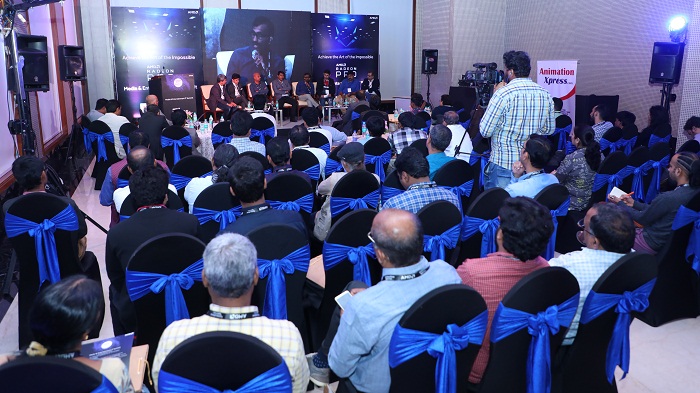
“Baytree Digital CEO Upen N Desai followed this with a session in which he explained how he has started offering cloud-based rendering services to the Studios to handle their Spikes in Computing Requirement with indigenously built platform – SpeedGaze. The platform is fully online and supports Autodesk Maya, Arnold, VRay and Blender applications to name few. Having served the farm to render projects like Thugs of Hindustan, Robo 2.0 and some international productions, SpeedGaze delivers consistent output with cost effective solution for Studios Rendering needs.”
The curtain call for the evening was helmed by the proficient team from AMD who showcased chip leaders hardware capabilities in the content creation industry which is constantly demanding more crunching power thanks to heavier graphics pipelines.
The team also shed light on their 16 GB graphic card with a two TB memory and Vega-based GPU, which has prospects of further strengthening the workstations for creating content.
Keeping up with the increasing demand and yet keeping it simple and affordable seems to be the most critical task for hardware developers and the brand showcased how it is beating the competition with multiple products at a time.
With a strong line-up of sessions coming to an end, the attendees took to networking, which in turn proved valuable giving prospects to another edition of the Summit!
